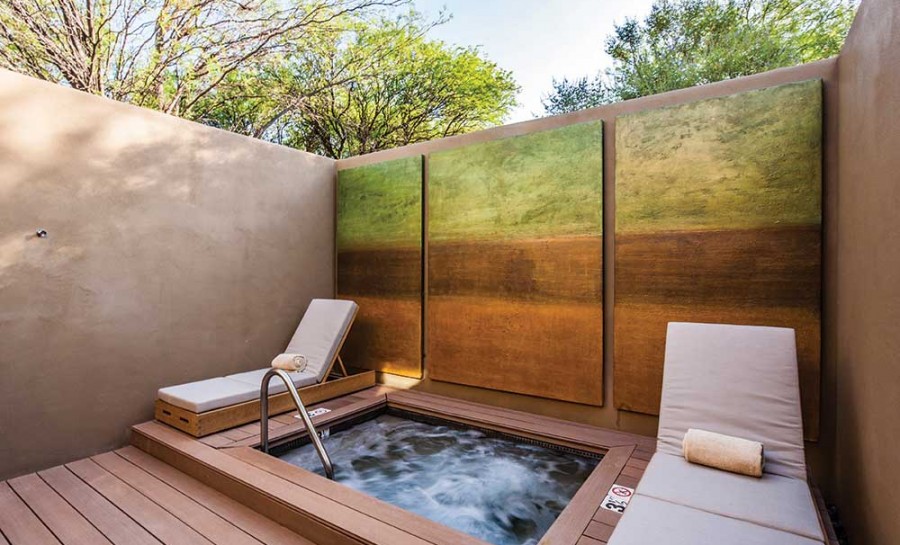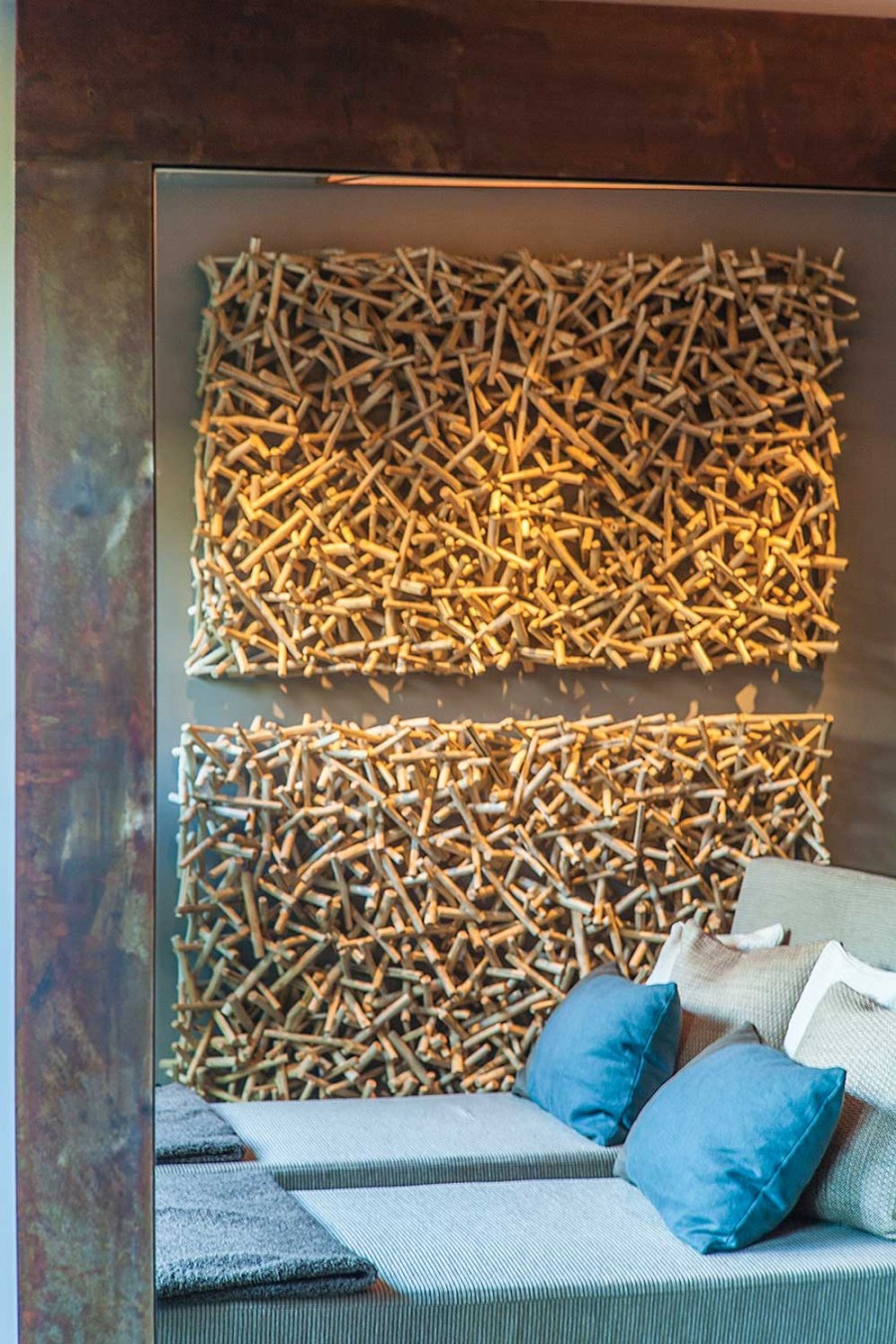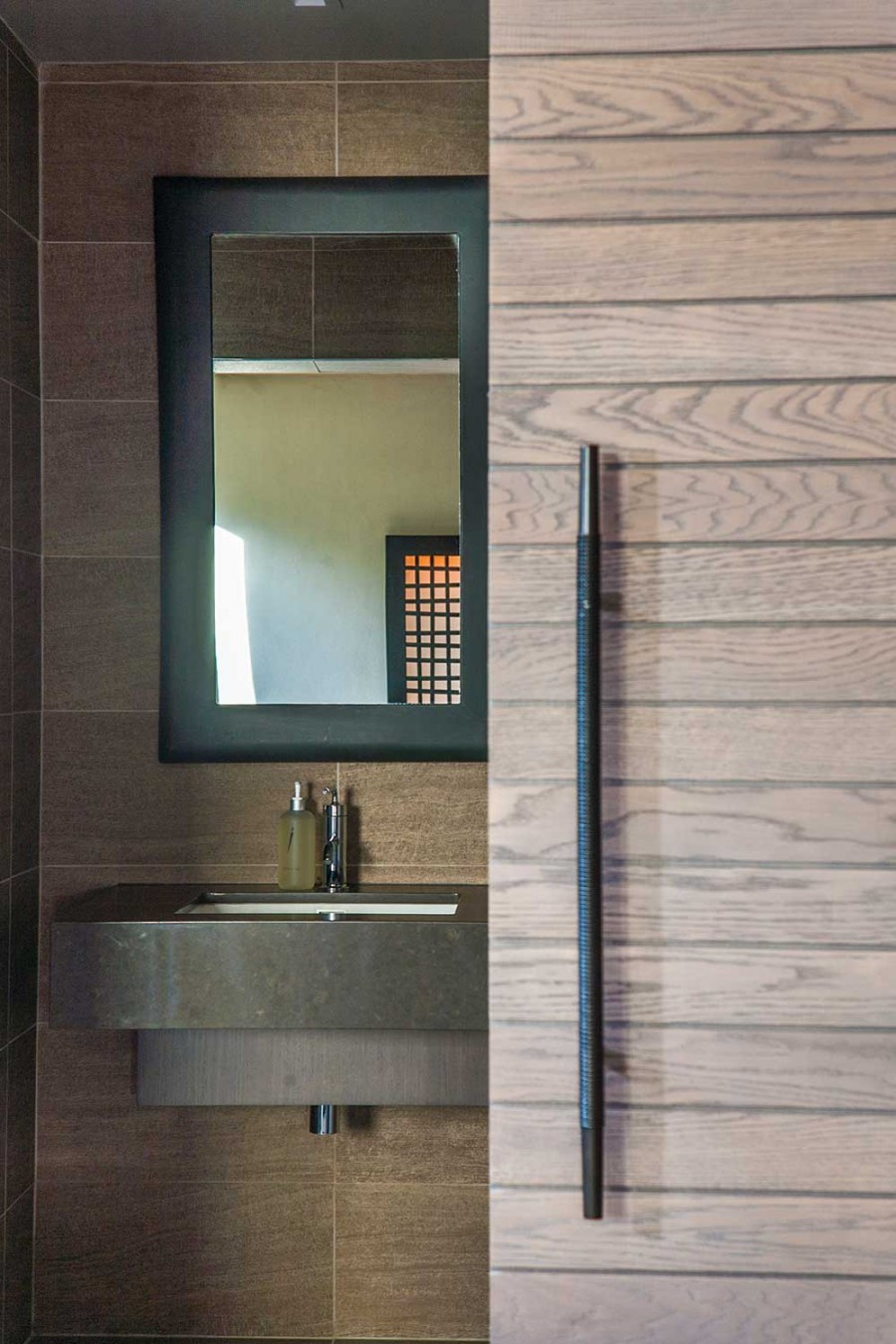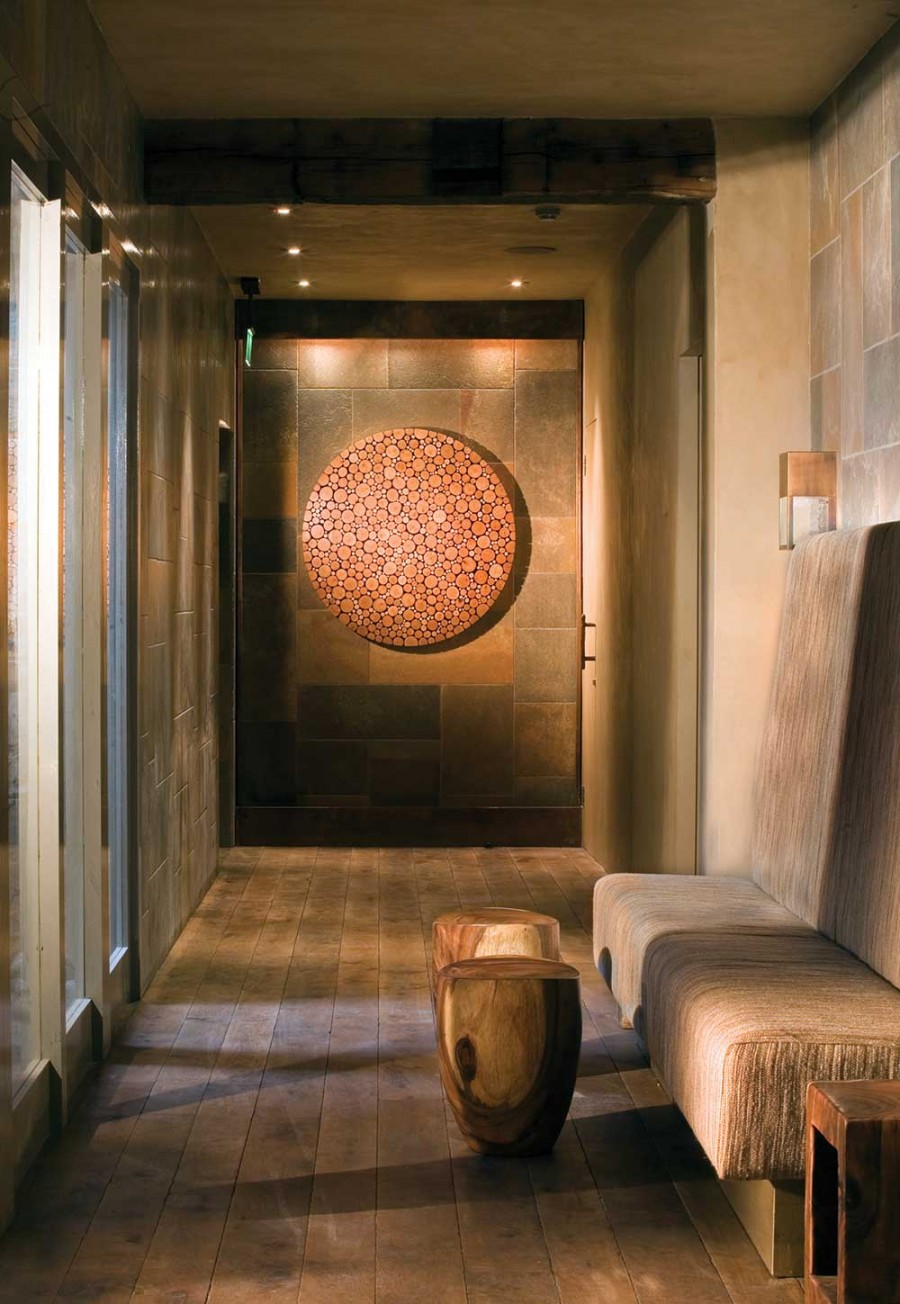Spa Design: Q&A With Spa Designer Clodagh
By Linda O'Keeffe | Winter 2013 | Features
Born in the west of Ireland in Oscar Wilde’s former house, Clodagh is a self-described visual nomad and perennial traveler. She’s also one of the foremost spa designers in the world, inducted into Interior Design magazine’s hall of fame, and routinely listed in roundups of the world’s best designers.
Clodagh, who goes by her first name only and says she proudly has no formal training, started her career in fashion design, then practiced feng shui. She switched to interior design in 1983. Whether she customizes furniture for hotel chains or perfects a simple, elliptical sink for Kohler, her signature style is clutter-free, mindful, and as quiet as possible. She has also authored two books. Her studio is in Manhattan, and she often weekends in Beacon, where her husband, Daniel Aubry, runs his own photography gallery.

How would you characterize your personal approach to spa design?
I can talk forever about the latest citrus scrubs and honey blossom rubs, but the best spas nurture the soul as well as the body. I see a symbiosis between the current interest in spas and my residential clients asking for larger bathrooms. We’re all placing more importance on the ritual of bathing and cleansing. In purely practical terms, when I’m devising a color palette for a spa I use warm neutrals overall and I incorporate all the chakra colors—violet, indigo, blue, green, yellow, orange, and red—in subtle ways. I use all the metals for their healing properties, and I prefer wood and organic materials where there’s a detectable patina. I avoid using hard, echoing surfaces, and, apart from using mirrors to visually open up confined spaces and bring in light and views, I steer clear of anything shiny and bright. I also love reflections in flat troughs of water.
What’s the biggest difference between the experience of a day spa and a retreat spa?
In a day spa, we take an hour or a concise, limited slice of our hectic lives sandwiched in between our regular appointments, so time is of the essence. When we overnight or spend a weekend in a spa, we have the luxury of forgetting about time, and if we look at our watch it’s invariably because we’d rather not miss a scheduled back rub or the next yoga session. Traveling to a destination resort or retreat is a greater commitment in every way, so there’s an opportunity to submit to a deeper mental and physical surrender.

How does design help promote that holistic experience?
Walking into any spa requires a gear change, a shift in thinking, so the door to a spa is important. It’s not just any old entrance. It’s a threshold, a portal. We’ve elected to be pampered, so once we’re inside, anticipation heightens all the senses and each one—smell, sight, hearing, taste and touch—should be addressed during our visit. I like to be offered nibbles and I’m not adverse to a glass of wine! It’s not about self-denial. It’s about opening our bodies to receive wellness.
So the first impression of walking into a spa is extremely important?
Absolutely! Ideally, a sense of calm is palpable as soon as we enter. The receiving area is quiet but not silent—stone silence can feel ominous. Sight is the most promiscuous of the senses, so a lack of detectable clutter is important, and all visible surfaces should appear clean but never clinical. It’s an aesthetic I refer to as life-enhancing minimalism. It’s beneficial to activate the sense of smell with essential oils, and lighting is best kept comfortably low and indirect—of course, natural light is optimal. Hopefully, this orchestrated atmosphere opens us to taking in a few long breaths.
So this “god-is-in-the-details” philosophy brings us into presence?
I think so. There’s nothing superficial about it, it’s really quite profound. Everywhere you look in a spa should be beautiful, so every surface needs to be thought through. In a massage room guests spend a lot of time on their backs and they’re often facedown in a neck cradle, so in my office we discuss ceilings and floors a lot. A spa I go to in New Zealand stations a bowl of water filled with floating flowers directly under each neck cradle. It transforms the incidental into something indelible.

Are the best destination spas also sanctuaries?
Yes. In our everyday lives how often can we say, “I’m happy, I’m well, and I’m safe”? When there’s peace, trust, shelter, and refuge, with one person touching another in a spirit of respect, generosity, and healing, the sixth sense often gets activated. It’s really quite sacred.
What are some of your spa pet peeves?
Well, I can’t stand terry-cloth robes. They make everyone look like a big bear. I prefer the Japanese yukatas, the soft cotton kimonos, or kaftans for women and pajamas for men. And I’m very particular about towels; I like them generously sized and in abundance. Endings are as important as beginnings. In Asia they’ve perfected the art of terminating sessions gracefully with a gentle whisper, or they ceremoniously serve an herbal drink. I generally pay for my services beforehand rather then when I leave, because I don’t want all the bliss I’ve accumulated to be neutralized with a financial transaction. That would definitely send me back into the world on the wrong foot.
Apart from working alongside Nena Thurman on the creation of the Mahasukha Spa at the Menla Mountain Retreat, Clodagh has rebranded over 80 Elizabeth Arden Red Door salons and spas. She also designed the Miraval Resort and Spa in the Arizona desert; the Spa de Serville in Aukland, New Zealand; the Sasanqua Day Spa in Charleston, South Carolina; the Nemacolin Woodlands Spa in Laurel Highlands, Pennsylvania; and White Horses at Doon Beg Resort in her native Ireland. She’s currently finessing the spa facilities for next year’s opening of the East hotel in Miami.
